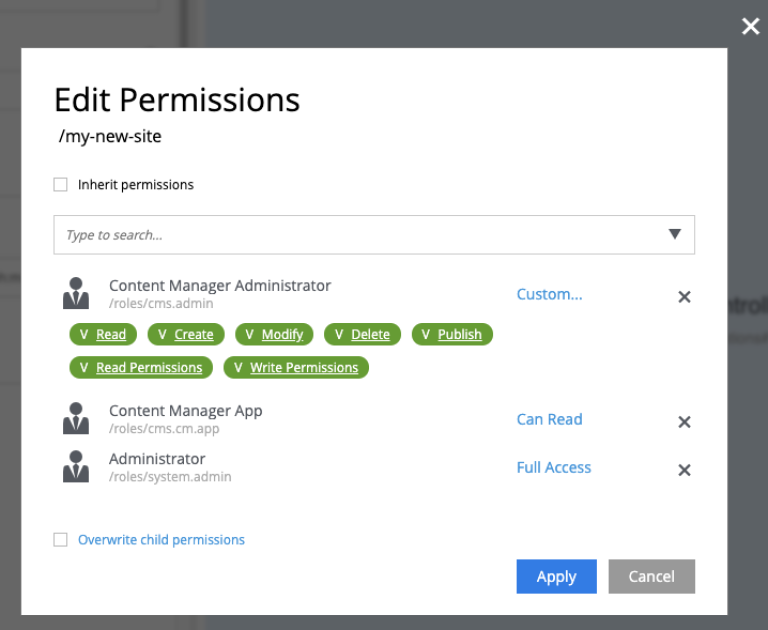Content Form
Contents
This panel appears on the left side of the page after content is created or while being edited. It is here the form appears in which content data is entered. The structure and fields in the form are determined by the content type which is defined in the application code. The content editor panel can be collapsed to give the page editor more room by clicking the arrow icon on the top right of the panel.

The top of the content form has the content type icon, the Display Name, and the content path name. The default icon can be replaced with an image file by clicking on it. When the Display Name is being changed, the path name will change accordingly to a URL-friendly version. It is also possible for the Display Name to be generated dynamically using values from other form fields by using a Display Name expression.
| Value of the Path field must be unique and will be validated against existing content every time the field is changed. |
After content has been published, the path field gets locked and user has to click the pencil icon to rename content in the dedicated modal dialog. These precautions aim to prevent accidental breaking of external hard-coded links.

Underneath is a toolbar with clickable navigation steps that correspond to different sections of the content form. The first one is always content type name, and the last ones are icons for the Schedule (only for published content), Settings and Access wizard steps. In between, there might be X-data and Mixins steps enabled for this content. Clicking on an item in the toolbar will scroll the content form down to the corresponding section.

Form fields in the content data section depend on how the content type was set up.
Schedule section is where the period of time, during which a content is available online, can be modified.
| Schedule section is only displayed for published content. |
Settings section is where the content’s Language and Owner are set. The Language will be inherited from the parent content if it was set there. The Owner will be the logged in user who created the content, but it could be changed if the current user has the right permissions.
Content permissions can be modified in the dedicated modal dialog. Content will by default inherit the permissions of the parent content when created.

To modify permissions, uncheck "Inherit permissions" checkbox, then you will be able to remove/add principals and modify their permissions. Clicking on any item here will expand it and show what permissions the principal has.
